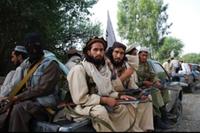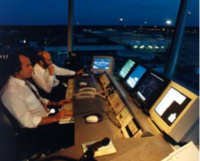-
Federal mapping tool used in Gulf spill expanded to Arctic
A new federal interactive online mapping tool used by emergency responders during the Deepwater Horizon oil spill has been expanded to include the Arctic, and will help address numerous challenges in the Arctic posed by increasing ship traffic and proposed energy development
-
-
Earthquake risk looms large in the Pacific Northwest

A comprehensive analysis of the Cascadia Subduction Zone off the Pacific Northwest coast confirms that the region has had numerous earthquakes over the past 10,000 years, and suggests that the southern Oregon coast may be most vulnerable based on recurrence frequency
-
-
New study probes insider threat in financial services sector
New study found that those committing insider fraud are taking a “low and slow” approach, escaping detection for long periods of time and costing targeted organizations an average of $382,000 or more, depending on how long the crime goes undetected; managers and accountants cause the most damage from insider fraud and evade detection longer
-
-
U.S. losing patience with Pakistan over Haqqani network’s growing boldness

Last week the Pakistan government-supported Haqqani network released a video of a 1 June operation, showing members of the group driving an explosive-laden truck into Camp Salerno, an American military base in Afghanistan, near the Pakistani border; the truck exploded, opening a breach in the camp’s fence, through which Haqqani militants entered the camp, shooting in all directions; only two GIs died in the attack — but it could have been far worse, as hundreds of American soldiers were in the mess hall only yards away; Congress has already voted to designate the Haqqanis as a Foreign Terrorist Organization (FTO), and administration officials say that the United States is “one major attack” away from unilateral action against Pakistan
-
-
Radiation detection equipment installed in four Mexican ports
The Megaports Initiative is a U.S. Department of Energy program intended to enhance the ability of ports around the world to detect and interdict illicit shipments of special nuclear and other radioactive materials; Under the initiative, radiation detection gear and protocols were implemented in the Mexican ports of Manzanillo, Altamira, Lazaro Cardenas, and Veracruz, through which 92 percent of Mexico’s containerized cargo pass
-
-
Men in maritime disasters save themselves first --“women and children first” is a myth

Since the sinking of the Titanic, there has been a widespread belief that the social norm of “women and children first” gives women a survival advantage over men in maritime disasters, and that captains and crew members give priority to passengers; a new study find that the Titanic disaster, in which 70 percent of the women and children on board were saved compared to 20 percent of the men, is a glaring exception to the rule; during maritime disasters, men use their relative strength to save themselves; what is more, studies of human behavior during natural disasters show the same results: in life-and-death situations, it is every man for himself
-
-
Science group: storing spent nuclear fuel in dry casks significantly safer then wet pools storage

An NRC report on the lessons of the Fukushima disaster says that storing spent nuclear fuel in wet pools is “adequate” to protect the public; a science groups says there is a significantly safer way to store the 55,000 tons of radioactive waste currently stored by the 104 nuclear power plants operating in the United States: transferring the spent fuel to dry casks
-
-
DARPA demonstrates quick vaccine development for hypothetical pandemic

A World Health Organization (WHO) estimates that between 20 and 50 percent of the world’s population will be affected if a pandemic were to emerge; WHO forecasts “it may be six to nine months before a vaccine for a pandemic virus strain becomes available”; DARPA reports that rapid fire test of novel, plant-based production method delivers more than ten million doses of H1N1 VLP influenza vaccine candidate in one month
-
-
Global air control system largely defenseless against hacking

The ADS-b system, the multi-billion dollar communication system deployed at airports around the world over the last few years, has two major flaws: first, it has no means of verifying who is actually sending a message, which means that a hacker can impersonate an aircraft and send malicious and misleading information to control towers and to other aircraft; second, the position, velocity, and other information broadcast by aircraft is not encrypted and can be grabbed from the air; a presenter at the Black Hat cybersecurity event showed how it is possible to use the information to plot the route of Air Force Phone on an iPad; these two vulnerabilities can be easily exploited by anyone with modest technical skills and about $2,000 worth of electronics
-
-
BAE Systems' defense technology to help Team GB win Olympic medals
Scientists and engineers from BAE Systems have been applying defense and security technology to help the British Modern Pentathlon team to evaluate their high-tech laser pistols, which were introduced at the beginning of the 2011 season, replacing traditional air pistols
-
-
DHS offers advice on how to survive shooting sprees
For people who get caught in a shooting spree, such as the one in Aurora, Colorado, DHS offers a survival plan
-
-
A device used to measure nuclear weapons effects is now used for rocket propulsion system
Can a device formerly used to test nuclear weapons effects find a new life in rocket propulsion research? That is the question in which researchers seek an answer; when assembled, the device will tip the scales at nearly fifty tons, and will be “one of the largest, most powerful pulse power systems in the academic world,” according to one researcher
-
-
Researchers say spoofed GPS signals can be countered
From cars to commercial airplanes to military drones, global positioning system (GPS) technology is everywhere — and researchers have known for years that it can be hacked, or as they call it, “spoofed”; the best defense, they say, is to create countermeasures that unscrupulous GPS spoofers can not deceive
-
-
Illegal and prescription drugs: “Impossible Situations”
It is now thirty years since President Ronald Reagan, on 14 October 1982, declared the U.S. War on Drugs; this effort to deal with drugs’ “supply side” has led to an ever increasing global policing in the name of curtailing international criminal drug cartels, a policy which may in fact create more national security risks than it allegedly stifles; our ability to face up to and resolve our massive drug consumption at home, the “demand side” for both prescription and illegal drugs, may be drowned by the rhetoric of the political season, but we should note that lost in this political chatter are proven remedies, therapies, and other solutions and alternatives for drug-shattered families torn apart by abundant and cheap drugs, both those which are being smuggled from Mexico and those produced here at home
-
-
Northrop Grumman delivers Nationwide AIS to Coast Guard
Northrop Grumman has delivered its Nationwide Automatic Identification System (AIS) to the Coast Guard; the system provides a more comprehensive view of vessels bound for and navigating within U.S. ports and waterways
-
More headlines
The long view
Why Ukraine’s AI Drones Aren’t a Breakthrough Yet
Machine vision, a form of AI, allows drones to identify and strike targets autonomously. The drones can’t be jammed, and they don’t need continuous monitoring by operators. Despite early hopes, the technology has not yet become a game-changing feature of Ukraine’s battlefield drones. But its time will come.
